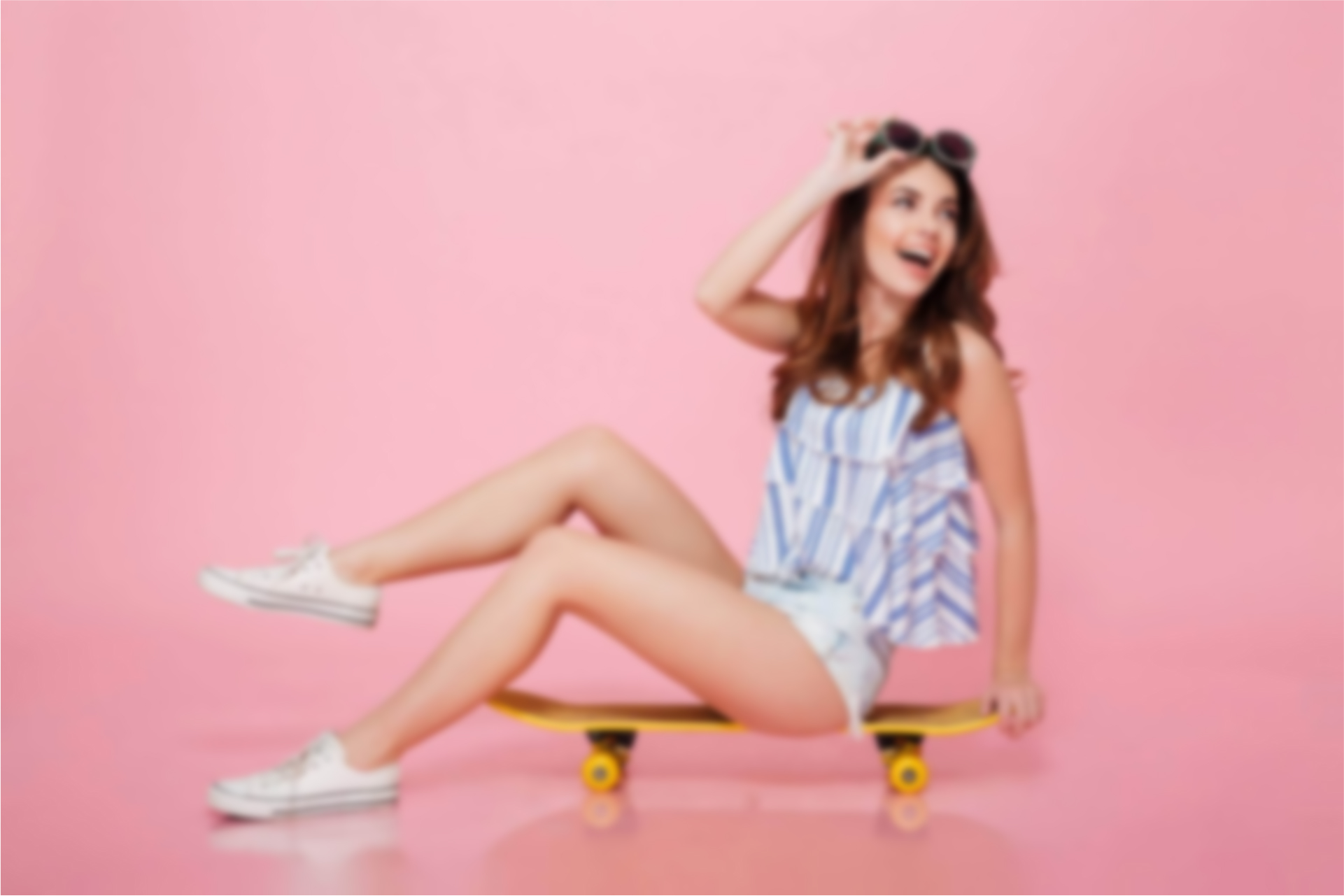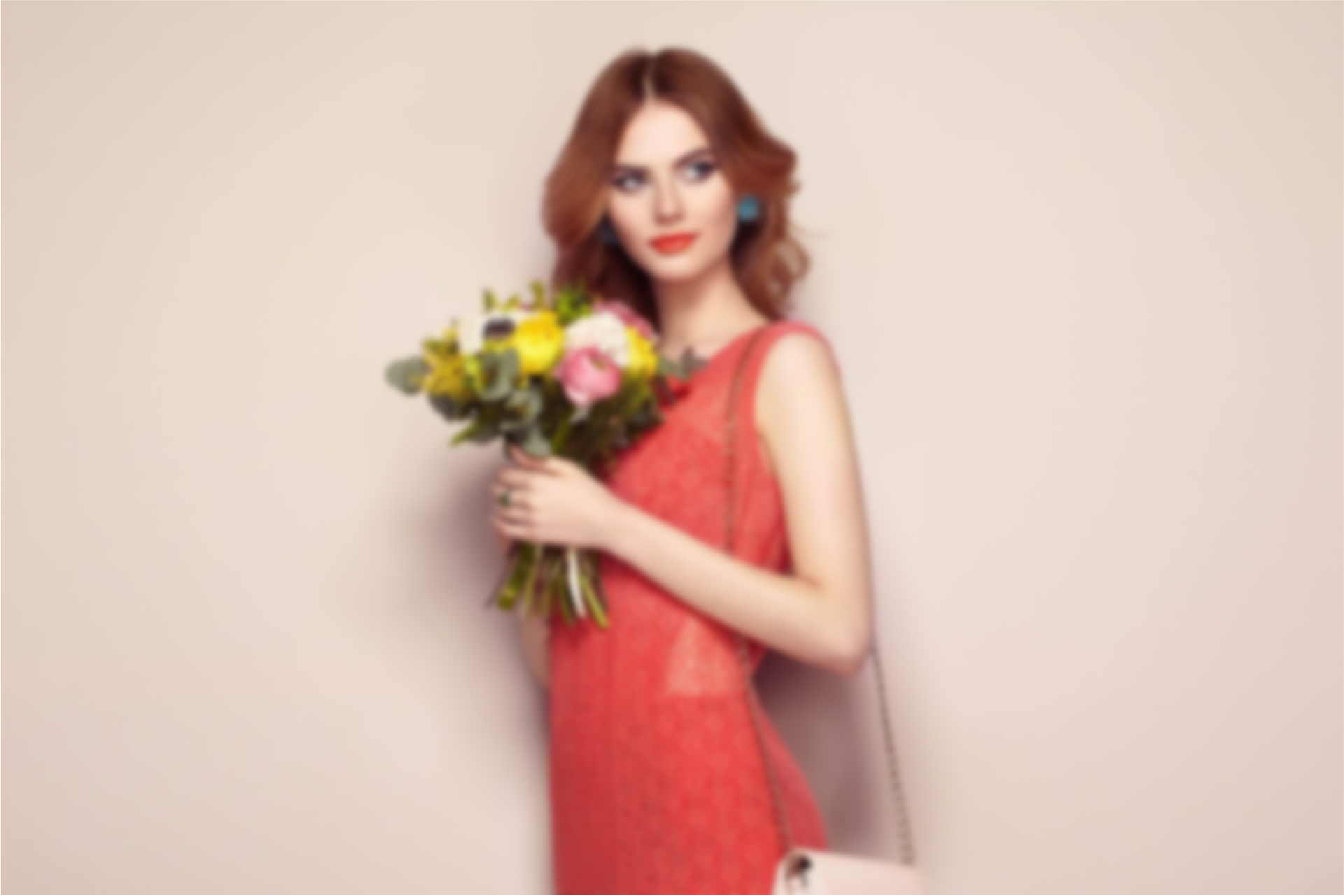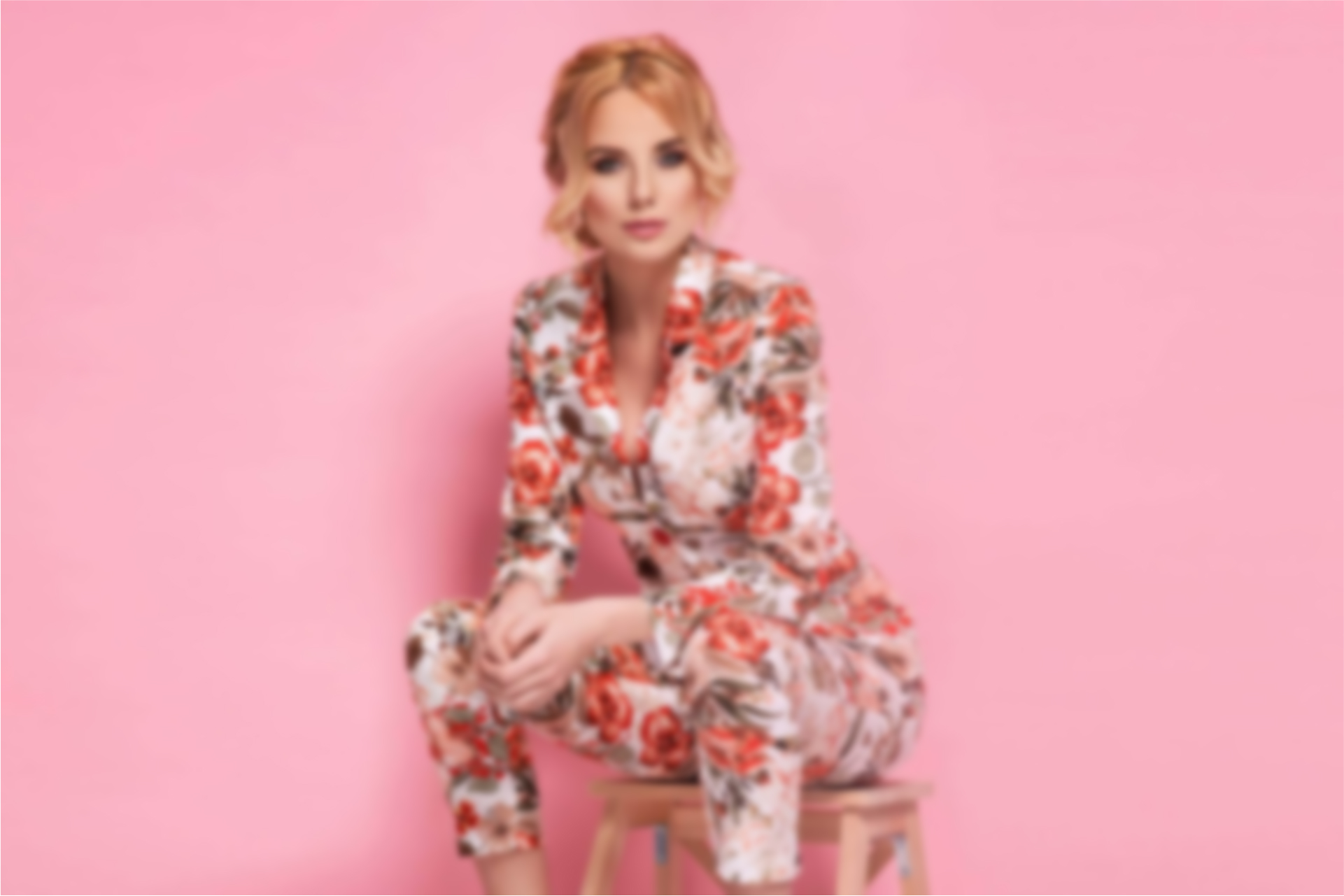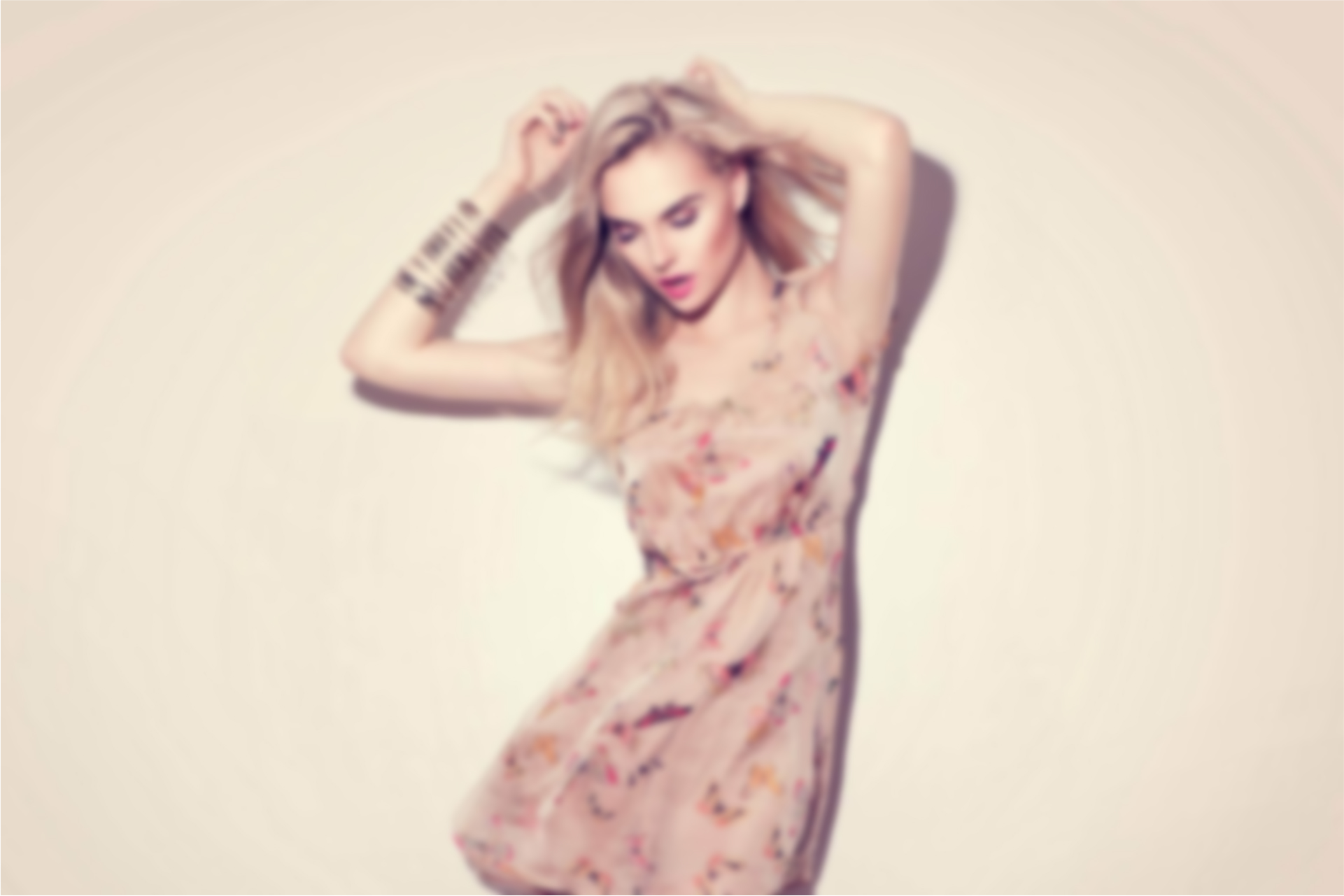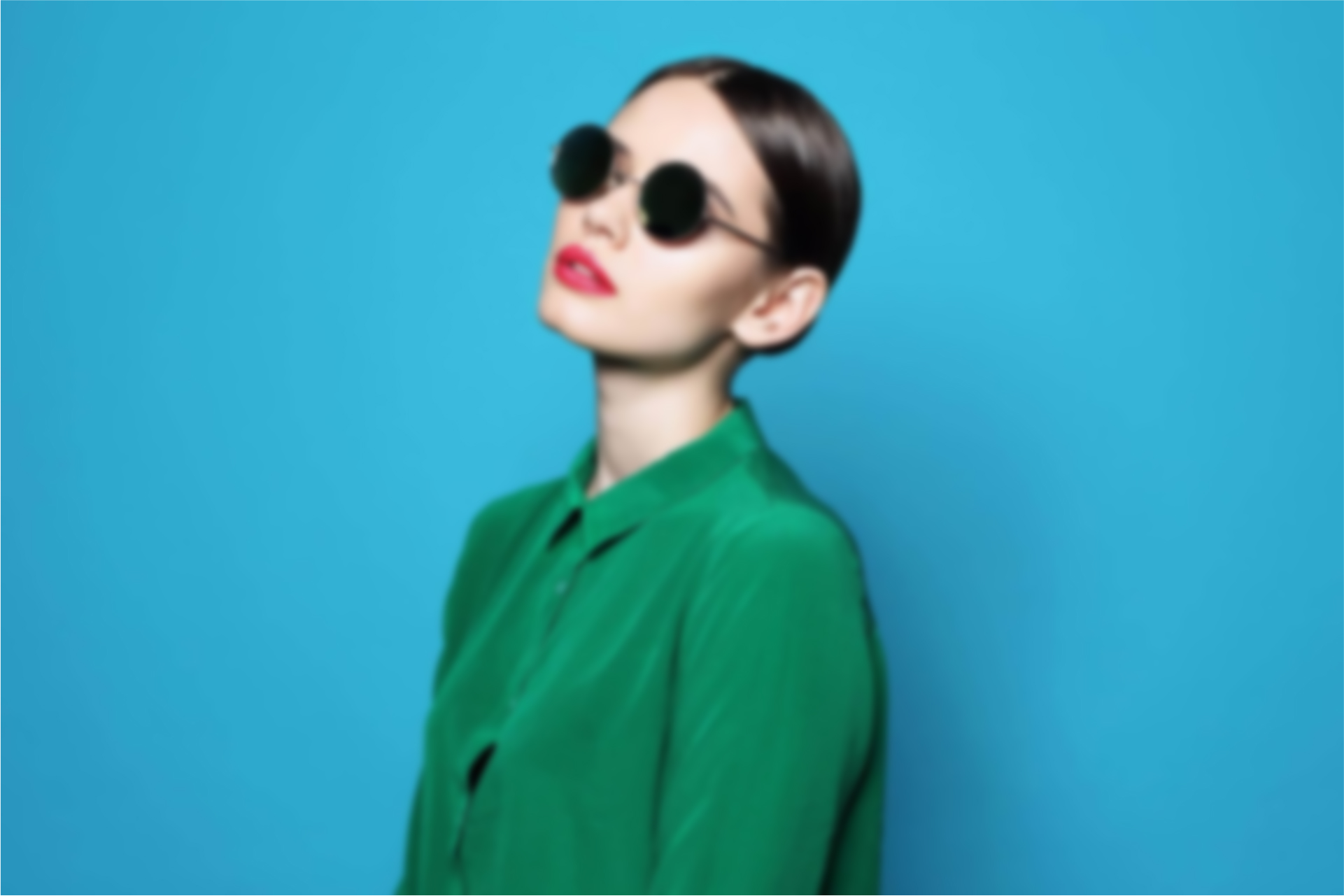Discover Knit Tunic Tops For Women with Dress Merchant, your trusted apparel sourcing agent for top-quality garments. As a leading buying house, we connect global buyers with reputable manufacturers and exporters, ensuring premium fabric, stylish designs, and competitive prices. Whether you’re sourcing casual wear or fashion-forward collections, our expert team streamlines the process for seamless global apparel procurement. Partner with Dress Merchant for efficiency and excellence.
Thank you for reading this post, don't forget to subscribe!1. The Enduring Allure of Knit Tunic Tops: A Wardrobe Essential
1.1 Redefining Comfort and Style in Modern Fashion
Knit tunic tops have emerged as a cornerstone of modern women’s fashion, seamlessly blending unparalleled comfort with versatile style. No longer confined to casual wear, these garments have redefined what it means to dress effortlessly yet elegantly. Their inherent softness and forgiving drape offer a welcome respite from rigid, structured clothing, providing a sense of ease that resonates deeply with contemporary lifestyles.
This section explores how knit tunic tops have transcended their initial perception to become a ubiquitous presence in diverse wardrobes, from the busy professional to the comfort-seeking leisure enthusiast. We delve into how their relaxed fit doesn’t compromise on sophistication, but rather enhances it, allowing for fluid movement and a perpetually polished appearance.
The evolution of knitwear technology has played a crucial role, enabling designers to create tunics that are both durable and divinely soft, proving that style and comfort are not mutually exclusive but can coexist harmoniously. The popularity of these tops signifies a broader cultural shift towards valuing well-being and practicality alongside aesthetic appeal in everyday attire.
1.2 The Historical Trajectory of Tunic Silhouettes
The tunic, a garment of remarkable longevity, boasts a rich historical trajectory that spans millennia and cultures, predating many contemporary fashion forms. Understanding its origins provides valuable context for the modern knit tunic top. This section will trace the fascinating evolution of the tunic silhouette, from its ancient roots as a fundamental piece of clothing worn by Greeks, Romans, and various Eastern civilizations, to its periodic resurgence in Western fashion.
Historically, tunics were often simple, loose-fitting garments, serving as practical and comfortable attire for daily life, unencumbered by restrictive tailoring. We will explore how cultural influences, societal changes, and technological advancements in textile production gradually shaped the tunic’s form, fabric, and ornamentation over centuries.
The transition from woven, often coarse materials to the pliable, comfortable knits of today marks a significant point in this lineage. This historical overview illustrates that the knit tunic top is not merely a fleeting trend but a contemporary manifestation of a timeless and globally recognized garment, continuously adapted to meet the evolving needs and preferences of women through the ages, now imbued with the added benefit of modern knit technology.
1.3 The Art of Knitwear: From Yarn to Garment
The creation of a knit tunic top is a meticulous process, an intricate dance between fiber science, textile engineering, and design artistry, culminating in a garment renowned for its comfort and drape. This section unpacks the complex journey from raw yarn to the finished tunic, highlighting the skilled craftsmanship and technological innovations involved.
We will delve into the various types of yarns commonly used, such as cotton, wool, rayon, modal, and synthetic blends, explaining how their unique properties contribute to the feel, stretch, and resilience of the final fabric. The discussion will cover different knitting techniques – from simple jersey to more complex rib or cable knits – and how each method imparts distinct textures, patterns, and levels of elasticity to the fabric.
The design process, including pattern drafting and shaping, which allows for the characteristic relaxed yet flattering silhouette of a tunic, will also be explored. This deep dive into the ‘how’ behind knitwear emphasizes that a knit tunic top is far more than just a piece of clothing; it is a product of sophisticated material science and textile artistry, designed to offer unparalleled comfort and effortless style through its carefully engineered construction and material composition.
1.4 Cultural Significance of Loose-Fitting Attire
Beyond its practical comfort and stylish appeal, loose-fitting attire, exemplified by the knit tunic top, carries significant cultural and societal implications. This subsection delves into the deeper meaning and historical symbolism associated with garments that offer freedom from constriction. In many cultures throughout history, flowing and relaxed clothing has been linked to status, ease, and even spiritual freedom, contrasting sharply with tight, restrictive garments often associated with specific social codes or labor.
We will explore how the modern embrace of loose-fitting tunics can be seen as a silent rebellion against unrealistic beauty standards that prioritize form over function and comfort. This shift reflects a growing desire for clothing that empowers movement and self-expression rather than confining the body. The comfort offered by knit tunics contributes to a sense of physical ease that can positively impact mental well-being, fostering a more relaxed and confident demeanor.
This section aims to broaden the understanding of knit tunic tops beyond mere fashion items, positioning them as symbols of personal liberation and a cultural shift towards valuing authentic comfort and well-being in everyday attire.
2. The Comfort Factor: Unparalleled Ease of Wear
2.1 The Magic of Stretch: Unrestricted Movement
The inherent magic of knit tunic tops lies in their unparalleled stretch, which translates directly into unrestricted movement, a defining characteristic that sets them apart from many other garments. This section will thoroughly explain how the unique construction of knit fabrics facilitates this freedom. Unlike woven fabrics, where yarns are interlaced at right angles, knit fabrics are formed by a series of interlocking loops.
This looping structure allows the fabric to expand and contract with the body’s natural motions, accommodating a wide range of activities without pulling, bunching, or feeling restrictive. We will delve into how the inclusion of elastic fibers like spandex or elastane further enhances this stretch and ensures excellent recovery, meaning the garment retains its shape even after prolonged wear.
This unrestricted movement is particularly crucial for active women, enabling seamless transitions from desk work to daily errands or light exercise without the need for wardrobe changes. The emphasis here is on how the very nature of the knit provides an ergonomic fit that moves with, rather than against, the wearer, contributing significantly to a continuous feeling of comfort throughout the day.
2.2 Breathability and Microclimate Management
One of the most critical aspects of comfort, especially for garments worn close to the body, is breathability and the ability to effectively manage the microclimate between the fabric and the skin. Knit tunic tops excel in this regard, a feature meticulously explored in this section. The open, looped construction of knit fabrics naturally allows for greater air circulation compared to tightly woven materials.
This enhanced permeability facilitates the dissipation of heat and moisture vapor from the body, preventing the uncomfortable sensation of clamminess or overheating. We will discuss how different fiber compositions within knit tunics—such as cotton for its natural absorbency, rayon for its moisture-wicking properties, or specialized synthetic blends—further optimize these thermoregulatory benefits.
The result is a garment that helps maintain a stable and comfortable body temperature, keeping the wearer feeling fresh and dry in various environments, from warm indoor spaces to transitional outdoor conditions. This superior breathability ensures that knit tunic tops are not just comfortable in their stretch, but also in their ability to adapt to and regulate the body’s thermal needs, promoting all-day comfort.
2.3 Softness Against the Skin: A Sensory Delight
The tactile experience of clothing is paramount to comfort, and knit tunic tops offer a sensory delight with their exceptional softness against the skin. This section will delve into the various factors that contribute to this luxurious feel, which is a hallmark of quality knitwear. The choice of yarn plays a significant role; fine-gauge natural fibers like merino wool or high-quality cotton, along with semi-synthetic fibers such as modal or Tencel, are prized for their inherently smooth and gentle touch.
Even synthetic blends, when engineered correctly, can achieve remarkable softness. Furthermore, the very structure of the knit fabric, with its interlocking loops, creates a more yielding and pliable surface compared to the sometimes abrasive texture of woven materials. We will also touch upon finishing processes that enhance softness, such as brushing or enzymatic treatments, which further refine the fabric’s handfeel.
This emphasis on tactile comfort ensures that wearing a knit tunic top is not just about looking good, but about feeling good, providing a continuous sense of gentle embrace and contributing to overall well-being throughout the day.
2.4 Lightweight Feel and Freedom from Bulk
The sensation of wearing lightweight clothing that allows for effortless movement is a significant comfort advantage, and knit tunic tops consistently deliver on this front, offering freedom from bulk. This section will explore how their design and material properties contribute to this airy feel. Unlike heavily structured garments or those made from dense, layered fabrics, many knit tunics are crafted from fine to medium gauge knits that possess inherent lightness.
Even when providing warmth, their construction often allows for insulation without added bulk, making them ideal for layering without feeling cumbersome. The natural drape of knit fabrics ensures that they fall gracefully over the body rather than adding volume, contributing to a sleek and unencumbered silhouette. This absence of excess fabric or rigid components means that the tunic moves fluidly with the wearer, never pulling or restricting.
This lightweight quality is particularly beneficial for extended wear, travel, or warmer climates, ensuring that the wearer feels unburdened and comfortable, providing a sense of freedom that heavier, bulkier garments often fail to offer.
3. Styling Versatility: A Chameleon in Your Wardrobe
3.1 Effortless Everyday Chic: Casual Adaptability
Knit tunic tops are unparalleled in their ability to embody effortless everyday chic, making them the ultimate garment for casual adaptability. This section will delve into the myriad ways these versatile tops can be styled for daily wear, seamlessly transitioning through various informal settings. Imagine pairing a soft, oversized knit tunic with your favorite skinny jeans or leggings for a comfortable yet polished look perfect for running errands, school drop-offs, or a relaxed coffee date.
We will explore how different necklines – from classic crew necks to relaxed V-necks or elegant boat necks – can influence the overall casual aesthetic. The inclusion of subtle textures like ribbing or slub knits can add interest without sacrificing comfort. Furthermore, the tunic’s length makes it ideal for layering over tanks or camisoles, providing modest coverage while remaining stylish.
Accessorizing with a simple scarf, statement earrings, or comfortable sneakers can further elevate the ensemble. This subsection aims to demonstrate how knit tunic tops are the quintessential building blocks for a comfortable, stylish, and utterly effortless casual wardrobe, proving that comfort doesn’t mean compromising on looking put-together for any daily activity.
3.2 Elevating Professional Attire: Smart-Casual Power
While often associated with casual comfort, knit tunic tops possess a surprising capacity to elevate professional attire, making them a cornerstone of smart-casual power dressing. This section will meticulously outline how these versatile garments can be seamlessly integrated into a corporate or business-casual wardrobe, bridging the gap between comfort and professional polish.
Consider a finely knit tunic in a sophisticated solid color or a subtle print, paired with tailored trousers, a sleek pencil skirt, or even smart culottes. The inherent drape and flattering silhouette of the tunic lend an air of relaxed elegance, while the knit fabric provides essential stretch for comfort during long workdays. We will explore how layering a tunic under a structured blazer or a refined cardigan can instantly elevate the look, adding layers of sophistication without bulk.
Accessorizing with professional jewelry, a smart belt, or elegant footwear can further refine the ensemble. This subsection aims to challenge the traditional boundaries of workwear, showcasing how knit tunic tops can provide a modern, comfortable, and yet undeniably powerful alternative to more restrictive professional garments, embodying a new era of effortless corporate style.
3.3 The Art of Layering: Seasonless Adaptability
The art of layering finds its perfect canvas in the knit tunic top, making it a truly seasonless garment capable of adapting to fluctuating temperatures and diverse stylistic needs. This section will meticulously detail how these tops serve as foundational pieces for creating dynamic and comfortable layered ensembles year-round.
During cooler months, a lightweight or medium-weight knit tunic can be worn over a long-sleeved tee or thermal top for added warmth, and then effortlessly layered under blazers, cardigans, vests, or even heavier coats without adding uncomfortable bulk. Their smooth texture ensures seamless layering, preventing bunching or an awkward fit. In transitional seasons like spring and autumn, a tunic can be worn on its own or with a light jacket.
For warmer climates, opting for lighter-gauge knits or sleeveless tunic styles allows for comfortable wear while still providing coverage and a chic silhouette. We will also explore how contrasting textures and lengths in layering can create visual interest and dimension.
This subsection emphasizes the knit tunic’s exceptional adaptability, positioning it as a strategic investment that maximizes wardrobe utility across all climates and occasions, offering unparalleled versatility for endless styling possibilities.
3.4 Evening Sophistication: Dressing Up with Ease
Challenging the notion that knitwear is solely for casual settings, knit tunic tops can effortlessly transition into evening sophistication, offering a comfortable yet elegant alternative for dressier occasions.
This section will demonstrate how, with strategic styling, these versatile garments can be elevated to achieve an alluring evening look. Imagine a tunic crafted from a luxurious knit blend, perhaps with a subtle shimmer, intricate texture, or elegant embellishments. Pair it with sleek, tailored trousers in a rich fabric like satin or velvet, or a flowing maxi skirt for a dramatic effect.
The inherent drape of the knit provides an elegant silhouette, while the comfort ensures ease of movement throughout the evening. We will explore how statement jewelry, such as a bold necklace or dazzling earrings, can instantly transform the outfit. The choice of footwear, from elegant heels to sophisticated flats, also plays a crucial role. This subsection aims to inspire creative dressing, proving that comfort doesn’t have to be sacrificed for glamour.
Knit tunic tops offer a modern, relaxed approach to evening wear, allowing women to feel both utterly comfortable and undeniably chic at any social gathering, dinner, or special event.
4. The Fabric Story: Materials and Their Magic
4.1 Natural Fibers: Breathability and Softness
The choice of natural fibers plays a pivotal role in imbuing knit tunic tops with their signature breathability and luxurious softness, making them a preferred choice for comfort-seekers. This section will delve into the unique characteristics and benefits of various natural fibers commonly used in knitwear. Cotton, a perennial favorite, will be explored for its exceptional absorbency, breathability, and soft handfeel, making it ideal for everyday wear and warmer climates.
Merino wool, renowned for its fine fibers, will be highlighted for its incredible softness (without the itch often associated with traditional wool), natural temperature regulation properties (keeping you warm in cool weather and cool in warm weather), and moisture-wicking capabilities. Linen, when blended into knits, offers a crisp texture and superior breathability, perfect for summer.
We will also touch upon lesser-known natural fibers like cashmere for its unparalleled softness and warmth, and silk for its lustrous drape and smooth feel. This subsection emphasizes how these natural materials, thoughtfully incorporated into knit tunics, provide a comfortable, eco-friendly, and often hypoallergenic option, ensuring a pleasant tactile experience and promoting overall well-being.
4.2 Synthetic Blends: Durability and Shape Retention
While natural fibers bring inherent softness and breathability, synthetic blends are crucial in endowing knit tunic tops with exceptional durability, enhanced stretch, and superior shape retention, ensuring longevity and consistent fit.
This section will explore the remarkable properties of various synthetic fibers and how they are strategically combined with natural fibers to create high-performance knitwear. Spandex (also known as elastane or Lycra), the most common stretch fiber, will be discussed for its incredible elasticity and ability to allow garments to stretch and recover, maintaining their original shape even after repeated wear and washing.
Polyester, a robust synthetic, contributes to wrinkle resistance, colorfastness, and quick-drying properties, making knit tunics low-maintenance and travel-friendly. Nylon adds strength and abrasion resistance, enhancing the garment’s overall durability. The art of blending lies in achieving the perfect balance, leveraging the best attributes of both natural and synthetic components to create a fabric that is not only comfortable but also resilient, easy to care for, and maintains its flattering silhouette over time.
This subsection highlights the scientific engineering behind these innovative blends, ensuring that knit tunic tops offer a blend of comfort, practicality, and enduring quality.
4.3 Semi-Synthetic Marvels: Modal, Rayon, and Tencel
Bridging the gap between natural and synthetic, semi-synthetic fibers like Modal, Rayon, and Tencel represent a marvelous category of materials that bring unique qualities to knit tunic tops, often enhancing drape, softness, and breathability.
This section will delve into the production and benefits of these versatile fibers. Rayon, the oldest regenerated cellulosic fiber, is known for its silky feel, excellent drape, and absorbency, making it a comfortable choice, especially in warmer weather. Modal, a type of rayon made from beechwood pulp, is celebrated for its exceptional softness, resistance to shrinkage and pilling, and vibrant color retention, even after multiple washes.
Tencel (Lyocell), another highly sustainable cellulosic fiber derived from eucalyptus trees through an eco-friendly closed-loop process, is lauded for its luxurious silky feel, breathability, and remarkable strength. These semi-synthetics often mimic the properties of natural fibers while sometimes offering enhanced durability and drape.
This subsection showcases how these innovative, bio-based fibers contribute to the supreme comfort and elegant aesthetic of knit tunic tops, providing a sustainable and high-performing alternative in modern textile manufacturing.
4.4 Specialty Yarns: Texture, Luster, and Innovation
Beyond the primary fiber compositions, the world of knit tunic tops is enriched by the inclusion of specialty yarns that introduce unique textures, lustrous finishes, and cutting-edge innovations. This section will explore these distinctive elements that elevate knitwear from basic to extraordinary. We will discuss novel yarn constructions, such as slub yarns that create subtle irregularities and a heathered look, or boucle yarns that produce a looped, textured surface, adding visual interest and depth to the fabric.
The incorporation of metallic threads can infuse a delicate shimmer, transforming a simple tunic into an elegant evening piece. Chenille yarns offer an incredibly soft, plush, and velvety texture, providing a luxurious tactile experience. Furthermore, advancements in yarn technology include those with inherent performance features like advanced moisture-wicking capabilities, anti-microbial properties, or even temperature-regulating components embedded directly into the yarn.
This subsection highlights how these specialty yarns are instrumental in diversifying the aesthetic and functional range of knit tunic tops, ensuring that there is a unique and innovative option for every style preference and comfort requirement, pushing the boundaries of traditional knitwear.
5. Fit and Form: Flattering Every Figure
5.1 Understanding Different Tunic Silhouettes
The beauty of knit tunic tops lies in their diverse range of silhouettes, each designed to flatter various body types and personal style preferences. This section will meticulously break down the most common tunic silhouettes, providing a clear understanding of their unique characteristics and how they contribute to a comfortable yet stylish fit. We will explore the classic A-line tunic, which gently flares from the bust, offering a relaxed and universally flattering shape that skims over the hips.
The straight or column tunic, which maintains a more consistent width from shoulder to hem, creates a streamlined and modern look, often preferred for layering. The asymmetrical tunic, with its uneven hemline, adds a contemporary and artistic touch, creating visual interest and elongating the figure. Furthermore, the dolman sleeve tunic, characterized by its wide armholes and tapered sleeves, provides a relaxed fit around the bust and shoulders while tapering at the wrist for a chic finish.
Understanding these distinct silhouettes empowers consumers to select a knit tunic top that not only provides comfort but also perfectly complements their individual body shape and desired aesthetic.
5.2 Necklines for Every Face and Occasion
The choice of neckline in a knit tunic top is a crucial element that profoundly influences its overall aesthetic, impacting how it frames the face and suits various occasions. This section will comprehensively explore the array of necklines available, detailing their individual characteristics and stylistic implications. We will delve into the timeless appeal of a classic crew neck, offering a modest and versatile option suitable for layering or standalone wear.
The elegant V-neck will be discussed for its ability to elongate the neck and décolletage, providing a universally flattering and often more sophisticated look. A graceful boat neck, with its wide, shallow cut extending to the collarbones, offers a chic and understated elegance, perfect for showcasing necklaces. Furthermore, the comfortable scoop neck provides a softer, more rounded opening, while the cowl neck adds luxurious drape and warmth. For each neckline, practical advice will be provided on how it complements different face shapes, bust sizes, and desired levels of formality.
This detailed guide aims to empower women to select a knit tunic top where the neckline not only enhances their comfort but also perfectly accentuates their personal features and suits the intended occasion.
5.3 Sleeve Lengths and Functional Design
Beyond aesthetics, the sleeve length of a knit tunic top significantly impacts its functional design, dictating its suitability for different seasons, activities, and layering needs. This section will meticulously examine the various sleeve lengths commonly found in knit tunics and their practical advantages. We will explore the classic long sleeve, providing warmth and coverage, ideal for cooler weather or professional settings, while ensuring unhindered movement due to the knit’s stretch.
The versatile three-quarter sleeve, hitting between the elbow and wrist, offers a stylish and practical option for transitional seasons, allowing for ease of movement without being cumbersome. Short sleeves and cap sleeves will be discussed for their breathability and comfort in warmer climates, offering a casual and relaxed feel. Furthermore, specialized sleeve designs like dolman sleeves, which offer generous room and drape, or bell sleeves, which add a fashionable flair, will be examined for their unique contributions to both style and comfort.
This detailed analysis helps consumers choose a knit tunic top where the sleeve length aligns perfectly with their lifestyle requirements, ensuring optimal comfort and versatility throughout the year.
5.4 Hemlines and Proportional Harmony
The hemline of a knit tunic top is a surprisingly impactful design element that dictates the garment’s overall flow, how it interacts with different bottoms, and ultimately, its proportional harmony on the wearer’s figure. This section will dissect various hemlines and their strategic contributions to both style and comfort. We will explore the classic straight hem, offering a clean, traditional finish that can be worn untucked for a relaxed look or tucked for a more polished silhouette.
The curved or “high-low” hem, a popular choice, provides a modern aesthetic by being shorter in the front and longer in the back, offering flattering coverage over leggings or skinny pants. Asymmetrical hemlines add a dynamic, contemporary edge, creating visual interest and a sense of movement. Side slits, often incorporated into longer tunics, enhance ease of movement and prevent the fabric from clinging to the legs, contributing to comfort and a stylish drape.
This detailed exploration aims to guide consumers in selecting a knit tunic top where the hemline not only complements their body shape but also harmonizes with their chosen bottoms, ensuring a balanced, flattering, and comfortable ensemble for any occasion.
6. Care and Longevity: Maximizing Your Investment
6.1 Gentle Washing Practices for Knit Integrity
To ensure the enduring quality and vibrant appearance of knit tunic tops, adopting gentle washing practices is absolutely paramount. This section will provide comprehensive, expert guidance on how to care for these garments to preserve their delicate knit integrity and prevent common issues like stretching, shrinking, or pilling.
The emphasis here is on cold water washing, whether by hand or using a machine’s delicate or hand-wash cycle. We will explain why hot water can degrade elastic fibers, cause colors to fade, and lead to shrinkage, while harsh detergents can strip the natural softness of the fibers. Advice will be given on turning the tunic inside out before washing to protect the outer surface from abrasion, and on using a mesh laundry bag for added protection in the machine. Proper detergent selection, opting for mild, enzyme-free formulas, will also be detailed.
This meticulous approach to washing will extend the life of your knit tunic tops, ensuring they retain their luxurious feel, vibrant color, and flattering shape through countless wears and washes, truly maximizing your investment.
6.2 Optimal Drying Methods for Shape Retention
The drying phase is just as critical as the washing process in maintaining the original shape and flattering fit of knit tunic tops. Improper drying methods can lead to irreversible stretching, distortion, or damage to the delicate knit structure. This section will outline the most effective and gentle drying techniques that guarantee your tunic retains its pristine silhouette.
The primary recommendation will be air drying, specifically by laying the tunic flat on a clean, dry surface or a dedicated mesh drying rack. This method evenly distributes the garment’s weight, preventing gravity from pulling and distorting the fabric, which can occur if hung on a hanger while wet. We will meticulously explain why direct sunlight and high heat from tumble dryers should be strictly avoided, as both can degrade elastic fibers, cause shrinkage, and lead to pilling.
For those who must use a dryer, specific instructions on using the lowest heat setting and removing the garment while still slightly damp to allow for final air drying will be provided. This comprehensive guide ensures your knit tunic tops remain in perfect condition, offering consistent comfort and style wear after wear.
6.3 Smart Storage Solutions to Prevent Stretching
The way knit tunic tops are stored significantly impacts their ability to maintain their pristine form and prevent unsightly stretching or creasing over time. This section will offer expert advice on smart storage solutions that protect the inherent elasticity and graceful drape of these comfortable garments.
Unlike structured woven tops that often benefit from hanging, the weight of knit fabrics, especially those with significant stretch, can cause them to sag and lose their original shape if hung improperly for extended periods. Therefore, folding is generally the preferred method for storing knit tunic tops. We will provide detailed instructions on how to fold them neatly to minimize wrinkles and avoid harsh creases along the folds.
Advice will be given on storing them in drawers or on shelves where they can lie flat, ensuring their weight is evenly supported. For tunics made from very fine knits or those with delicate embellishments, storing them in breathable fabric bags can offer additional protection from dust and snags.
This subsection underscores the importance of understanding the material’s properties when it comes to storage, ensuring that your beloved knit tunic tops remain in impeccable condition, ready to provide their signature comfort and style whenever you desire.
6.4 Troubleshooting Common Knitwear Concerns: Pilling and Snags
Even with diligent care, knit tunic tops can occasionally fall prey to common knitwear concerns such as pilling and snags. This section will provide practical, expert strategies for effectively troubleshooting these issues, helping to restore your garments’ smooth appearance and extend their lifespan. Pilling, characterized by small balls of fibers forming on the fabric surface, typically occurs in areas of high friction.
We will discuss various methods for removing pills, from specialized fabric shavers and lint rollers to careful manual techniques using a fine-toothed comb or even a disposable razor, always emphasizing caution to avoid damaging the fabric itself.
For snags, where a yarn has been pulled out of the knit structure, advice will be given on how to gently coax the loose loop back into place using a needle or a fine crochet hook, preventing further unraveling. The importance of addressing these minor imperfections promptly will be highlighted, as neglecting them can lead to more significant damage.
This subsection aims to empower consumers with the knowledge and techniques to confidently maintain their knit tunic tops, ensuring these comfortable and stylish garments remain a cherished part of their wardrobe for years to come.
7. The Economic Advantage: Value Beyond Comfort
7.1 Durability Translating to Long-Term Savings
Investing in high-quality knit tunic tops offers a significant economic advantage that extends far beyond their initial purchase price, translating into substantial long-term savings through their superior durability. This section will meticulously demonstrate how the robust construction and resilient nature of well-made knitwear contribute to fiscal prudence.
Unlike flimsy, fast-fashion alternatives that quickly degrade, stretch, or pill, a quality knit tunic top is designed to withstand countless wears and washes, maintaining its structural integrity and aesthetic appeal for years. This extended lifespan directly reduces the frequency with which replacements are needed, thereby cutting down on overall clothing expenditure.
We will highlight how the inherent strength of properly engineered knit fabrics, particularly those with synthetic blends for enhanced resilience, resists wear and tear effectively. This durability means fewer trips to the store and less money spent on continually refreshing a wardrobe.
This subsection frames knit tunic tops not merely as garments, but as smart financial investments that deliver consistent comfort and style while simultaneously offering tangible economic benefits over their extended lifecycle, proving that quality truly pays off in the long run.
7.2 Versatility Minimizing Wardrobe Redundancy
The remarkable versatility of knit tunic tops is a powerful economic asset, actively working to minimize wardrobe redundancy and maximize the utility of each garment purchased. This section will elaborate on how this adaptability leads to tangible financial savings for the consumer. Consider the multifaceted functionality of a single knit tunic: it can serve as comfortable loungewear, a polished top for professional settings, a chic piece for casual outings, and even be dressed up for evening events. This broad spectrum of use reduces the need to acquire numerous specialized tops for different occasions, thereby streamlining one’s wardrobe and reducing overall spending. We will explore how their ease of layering across various seasons further enhances their utility, making them year-round staples that negate the need for a separate set of summer and winter tops for certain categories. By performing multiple roles with effortless grace, knit tunic tops eliminate the accumulation of rarely worn garments, freeing up closet space and reducing unnecessary financial outlay. This subsection aims to illustrate how a strategic investment in highly versatile knit tunic tops fosters a more efficient, sustainable, and economically sensible approach to building and maintaining a stylish wardrobe.
7.3 Reduced Maintenance Costs: Convenience and Savings
One of the most compelling economic benefits of choosing knit tunic tops lies in the significant reduction of ongoing maintenance costs, offering both financial savings and remarkable convenience. This section will meticulously detail how these garments translate into lower laundry and garment care expenses. A key advantage is their inherent wrinkle resistance.
Unlike many woven fabrics that demand constant ironing or steaming to maintain a crisp appearance, knit tunics often spring back to their smooth form, even after being packed or worn for extended periods. This drastically cuts down on electricity consumption from ironing and saves valuable time.
Furthermore, the vast majority of knit tunic tops are machine washable on a gentle cycle, eliminating the need for expensive and frequent dry cleaning bills often associated with more delicate or formal fabrics.
We will also touch upon how their robust nature means less frequent need for repairs or professional alterations. This subsection highlights the practical financial savings associated with selecting knit tunic tops, demonstrating that their low-maintenance nature contributes directly to a more economical and hassle-free wardrobe management, delivering both unparalleled comfort and ongoing fiscal prudence.
7.4 Boosting Confidence and Productivity: An Intangible ROI
While not always directly quantifiable in monetary terms, the enhanced confidence and comfort that knit tunic tops provide can be considered a significant, albeit intangible, economic return, positively influencing productivity and overall well-being. This section will explore the profound psychological and professional benefits derived from wearing comfortable and flattering attire.
When individuals feel physically at ease in their clothing, they are less distracted by restrictive seams or irritating fabrics, allowing for greater focus, concentration, and sustained productivity in professional tasks. The flattering drape and forgiving nature of knit tunics enhance body confidence, leading to improved self-presentation, more engaging interactions, and a generally more positive demeanor in both social and professional settings.
This increased self-assurance can indirectly translate into better performance at work, more successful networking, and a greater sense of personal empowerment. We will discuss how feeling good in one’s clothes can reduce stress and enhance mood, ultimately contributing to greater efficiency and success in various aspects of life.
This subsection argues that the investment in a knit tunic top extends beyond the garment itself, yielding a valuable, unpriced return in terms of enhanced well-being, confidence, and personal effectiveness.
8. Sustainable Fashion: The Eco-Conscious Knit Tunic
8.1 Ethical Sourcing of Fibers and Manufacturing
The journey towards a truly sustainable fashion industry places immense importance on the ethical sourcing of fibers and responsible manufacturing practices for garments like knit tunic tops. This section will delve into the critical aspects of supply chain transparency and fair labor.
We will explore the growing demand for certified organic cotton, cultivated without harmful pesticides or synthetic fertilizers, significantly reducing its environmental impact compared to conventional cotton. The discussion will extend to recycled fibers, such as recycled polyester or regenerated nylon, which divert waste from landfills and lessen the reliance on virgin resources.
Furthermore, we will examine innovative semi-synthetic fibers like Tencel™ Lyocell and Modal, which are derived from sustainably managed wood sources through environmentally responsible closed-loop processes that minimize chemical and water waste. The role of certifications like Fair Trade, GOTS (Global Organic Textile Standard), and SA8000, which ensure fair wages, safe working conditions, and the absence of child labor, will be highlighted.
This subsection aims to educate consumers on the importance of choosing knit tunic tops from brands committed to ethical sourcing and manufacturing, promoting a more equitable and environmentally sound fashion ecosystem.
8.2 Water Conservation in Dyeing and Production
Water is an incredibly precious resource, and its conservation in the dyeing and production of knit tunic tops is a critical aspect of sustainable textile manufacturing. This section will shed light on the historically water-intensive nature of textile processes and highlight the innovative strides being made to reduce water consumption. We will discuss the significant water footprint associated with conventional fiber cultivation, such as cotton, and contrast it with more water-efficient alternatives. The discussion will extend to the dyeing process, traditionally a major consumer of water and a source of pollution, examining advancements such as waterless dyeing technologies, digital printing, and the use of low-impact, non-toxic dyes that drastically reduce water usage and effluent discharge. Furthermore, the implementation of closed-loop water systems in textile factories, where wastewater is treated and recycled for reuse, minimizing discharge and fresh water consumption, will be explored. The importance of industry initiatives and standards that promote water stewardship, such as the ZDHC (Zero Discharge of Hazardous Chemicals) Programme, will also be highlighted. This subsection aims to raise awareness about water conservation in textile production, encouraging consumers to support brands that are actively implementing water-saving technologies and practices, thereby contributing to a more water-secure future.
8.3 Minimizing Waste: From Design to End-of-Life
Minimizing waste throughout the entire lifecycle of knit tunic tops, from the initial design phase to their end-of-life, is a cornerstone of the burgeoning circular economy within the fashion industry. This section will explore various strategies employed to reduce textile waste at different stages. In the manufacturing phase, we will discuss the adoption of efficient pattern-cutting techniques that minimize fabric scrap, as well as the innovative practice of “knitting on demand,” which produces garments precisely to order, significantly reducing overproduction and deadstock.
The emergence of 3D knitting technology, capable of creating seamless garments with virtually no waste, will also be highlighted for its transformative potential. From a post-consumer perspective, the importance of extending the lifespan of knit tunic tops through durable design, proper care, repair services, and upcycling initiatives will be emphasized. We will also delve into programs for textile recycling, which transform old garments into new fibers or products, diverting them from landfills.
This subsection aims to foster a greater understanding of waste reduction efforts, encouraging consumers to embrace a more circular approach to their clothing consumption and contribute to a less wasteful and more sustainable future for fashion.
8.4 Longevity by Design: Investment in Quality
In the realm of sustainable fashion, the concept of “longevity by design” is paramount for knit tunic tops, transforming them from transient trends into enduring wardrobe investments. This section will delve into how conscious design and manufacturing choices contribute to the extended lifespan of these garments, thereby reducing their environmental footprint. We will explore how choosing high-quality yarns with inherent durability, coupled with robust knitting techniques that resist pilling and stretching, are foundational to creating long-lasting tunics. The emphasis here is on timeless silhouettes and versatile styles that transcend fleeting fashion cycles, ensuring that a knit tunic remains relevant and wearable for many years. Furthermore, the commitment to superior craftsmanship, including reinforced seams and meticulous finishing, plays a crucial role in preventing premature wear and tear. This subsection highlights that investing in a well-made knit tunic top is an inherently sustainable act. By choosing garments designed for durability and enduring appeal, consumers contribute to reducing textile waste, minimizing the need for constant replacement, and fostering a more responsible approach to fashion consumption, ultimately promoting a wardrobe built on quality and longevity.
9. Innovations in Knitwear: The Future of Tunics
9.1 Seamless Technology and 3D Knitting
The future of knit tunic tops is being profoundly shaped by revolutionary advancements in seamless technology and 3D knitting, promising unprecedented levels of comfort, fit, and design innovation.
This section will delve into these cutting-edge techniques and their transformative impact. Seamless knitting machines create entire garments in one continuous piece, eliminating uncomfortable seams that can chafe or irritate the skin, resulting in a ‘second-skin’ feel and a remarkably smooth aesthetic. This technology also allows for localized variations in knit structure within a single garment, enabling strategic placement of ventilation zones for enhanced breathability or compression areas for subtle support, all without adding bulk or seams.
Furthermore, 3D knitting takes this a step further, allowing for the direct creation of three-dimensional forms from yarn, reducing fabric waste to virtually zero and opening up vast possibilities for intricate designs and custom fits.
This subsection highlights how these innovations are not just about manufacturing efficiency but are fundamentally changing the wearer’s experience, making knit tunic tops even more comfortable, versatile, and environmentally conscious, pushing the boundaries of traditional garment construction.
9.2 Smart Fabrics and Performance Enhancements
The evolution of knit tunic tops is increasingly integrating smart fabrics and advanced performance enhancements, blurring the lines between fashion and functional technology. This section will explore the exciting innovations that are set to redefine the capabilities of knitwear.
We will delve into knit tunics embedded with thermoregulating fibers that adapt to the wearer’s body temperature, providing cooling properties in heat and warmth in cold, offering dynamic comfort throughout the day. The development of moisture-wicking and quick-drying technologies, crucial for active lifestyles, will be discussed for their ability to keep the wearer dry and comfortable by drawing sweat away from the skin.
Furthermore, the incorporation of antimicrobial agents or silver-infused yarns can provide odor-resistant properties, maintaining freshness for longer. The potential for integrating discreet biometric sensors into knit tunics to monitor vital signs or activity levels, connecting fashion with personal health tracking, will also be explored.
This subsection aims to showcase how the inherent flexibility and adaptability of knitwear make it an ideal platform for these technological advancements, promising a future where knit tunic tops are not just stylish and comfortable but also actively contribute to the wearer’s well-being and daily performance.
9.3 Customization and On-Demand Production
The future of knit tunic tops is moving towards an unprecedented era of personalization and customization, largely driven by advancements in digital design and on-demand production. This section will explore how these innovations are empowering consumers to become co-creators of their perfect garment. Imagine a scenario where a consumer can select their preferred knit pattern, choose from a vast palette of colors, specify precise measurements, and even customize elements like neckline styles or sleeve lengths, all through an intuitive online interface.
This personalized data is then fed directly to advanced knitting machines, which produce a single, perfectly tailored tunic on demand. This approach not only ensures an unparalleled fit and aesthetic satisfaction but also drastically reduces overproduction and textile waste, aligning with sustainable practices. We will discuss how this shift from mass production to bespoke creation allows for greater individual expression and a deeper connection to one’s clothing.
This subsection envisions a future where knit tunic tops are not generic commodities but highly personalized creations, offering the ultimate in comfort and style precisely tailored to the unique desires and dimensions of each individual wearer.
9.4 The Fusion of Comfort and High Fashion
The traditional boundaries between comfort wear and high fashion are increasingly dissolving, with knit tunic tops leading this exciting fusion. This section will explore how designers are elevating knitwear beyond casual loungewear into sophisticated, runway-ready pieces. We will examine how luxurious natural fibers like cashmere and merino wool are being crafted into intricate, fine-gauge knits, offering exquisite drape and touch that rival silk or satin.
The incorporation of couture-level details such as intricate cable patterns, delicate openwork designs, elegant ruching, or subtle embellishments transforms basic tunics into statement pieces. Designers are also experimenting with innovative silhouettes, dramatic proportions, and unexpected layering combinations, showcasing knit tunics in contexts previously reserved for more structured garments.
The emphasis here is on the inherent fluidity and comfort of knitwear as an asset to high fashion, rather than a limitation. This subsection envisions a future where knit tunic tops are celebrated not just for their comfort, but for their ability to embody sophisticated elegance and cutting-edge design, proving that true luxury can indeed be incredibly comfortable and effortlessly chic, solidifying their place in the upper echelons of modern style.
10. Voice of Authority: Testimonials and Endorsements
10.1 Fashion Editors’ Top Picks for Versatility
Fashion editors, with their discerning eye for emerging trends and enduring classics, frequently champion knit tunic tops as their top picks for versatility, a testament to their inherent adaptability and widespread appeal. This section will compile endorsements and insights from leading fashion journalists and editorial teams, highlighting why these garments consistently earn high praise in the industry.
Editors often commend knit tunics for their chameleon-like ability to seamlessly transition from casual daytime looks to polished professional ensembles, and even sophisticated evening wear with the right styling. They frequently note the tunic’s flattering drape across various body types and its inherent comfort as key factors that make it a wardrobe staple.
The ease of styling, whether layered or worn alone, and the wide array of colors, textures, and silhouettes available are also common points of praise. This subsection aims to leverage the authoritative voice of fashion media to validate the immense versatility and stylistic prowess of knit tunic tops, solidifying their reputation as a smart, comfortable, and endlessly adaptable choice for any woman’s wardrobe.
10.2 Ergonomics Experts on Posture and Freedom of Movement
Ergonomics experts, who study how to optimize human well-being and performance in relation to their environment, increasingly recognize the significant role of clothing in promoting good posture and ensuring freedom of movement. This section will feature insights and endorsements from these specialists, emphasizing why knit tunic tops align perfectly with ergonomic principles.
These experts highlight that restrictive or ill-fitting clothing can hinder natural movement, contribute to poor posture, and even lead to musculoskeletal discomfort over time. In contrast, the inherent stretch and forgiving drape of knit tunic tops allow for unrestricted movement of the limbs and torso, preventing physical constraints that can cause strain. They may discuss how the non-binding nature of knit fabrics promotes better circulation and reduces pressure points.
The ability of knit tunics to move with the body, rather than against it, minimizes the subtle, ongoing physical battles that often contribute to fatigue. This subsection aims to connect the practical comfort of knit tunic tops with scientific principles of ergonomics, demonstrating that choosing these garments is not just about personal preference but an active choice to support physical health, well-being, and unhindered daily functionality.
10.3 Celebrity Stylists’ Secret Weapon for Effortless Chic
Celebrity stylists, the masterminds behind the seemingly effortless and perpetually chic looks of Hollywood’s elite, often rely on knit tunic tops as their unheralded secret weapon. This section will reveal how these industry insiders leverage the inherent qualities of tunics to create covetable, comfortable, and paparazzi-ready ensembles for their high-profile clients.
Stylists frequently praise knit tunics for their ability to offer instant polish without sacrificing comfort, making them ideal for long days on set, extensive travel, or casual public appearances where looking put-together is paramount. They highlight the tunic’s forgiving silhouette, which can flatter a multitude of body types and effectively camouflage areas of concern while enhancing natural curves.
The ease with which tunics can be layered, accessorized, or dressed up or down is a key factor in their appeal. This subsection aims to draw a direct line between the everyday comfort of knit tunic tops and their sophisticated deployment in the world of celebrity fashion, offering readers an aspirational yet attainable pathway to achieving that coveted ‘effortless chic’ aesthetic that is both stylish and supremely comfortable, straight from the experts who craft it.
10.4 Real-Life Testimonials: Everyday Women’s Comfort Stories
The most authentic and compelling validation of the comfort and versatility of knit tunic tops comes directly from the real-life experiences of everyday women. This section will compile a collection of genuine customer reviews and heartfelt testimonials, offering relatable comfort stories that resonate deeply with potential buyers.
Expect to read narratives about the sheer relief of finding a top that provides all-day comfort without compromising on style, whether for busy workdays, active weekends with family, or relaxed evenings at home. Women will share how knit tunics have become their go-to pieces for travel, praising their wrinkle resistance and adaptability. Many testimonials will likely highlight the flattering fit that instills confidence across various body shapes and sizes.
The ease of care and the garment’s ability to maintain its shape and softness after countless washes will also be recurring themes. This subsection serves as powerful social proof, demonstrating through the sincere and diverse voices of satisfied customers that knit tunic tops truly deliver on their promise of unparalleled comfort, versatile style, and enduring quality in the practical realities of daily life, inspiring others to embrace their transformative benefits.
Conclusion: Knit Tunic Tops For Women
At Dress Merchant, we understand that Knit Tunic Tops for Women are more than just wardrobe staples—they are a blend of comfort, elegance, and everyday functionality. These versatile pieces continue to be a favorite across global markets for their flattering fit, breathable fabric, and adaptable style suited for casual wear, office attire, and beyond. As a trusted sourcing agent for apparel and garments manufacturers and exporters, Dress Merchant is committed to connecting buyers with premium-quality knit tunic tops that meet international fashion standards and consumer expectations. Whether you are a retailer, wholesaler, or private label brand, partner with us to streamline your sourcing journey and ensure consistent quality, timely delivery, and competitive pricing in every order.


